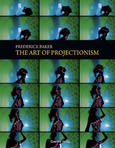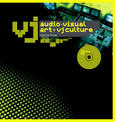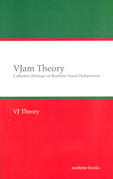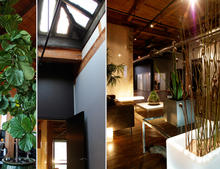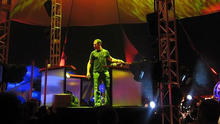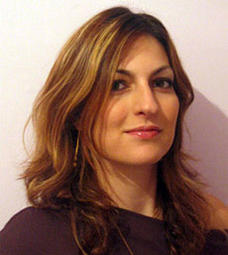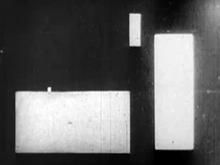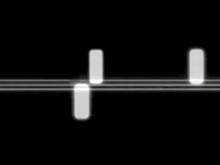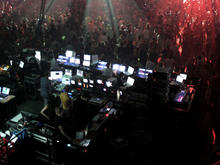Amon Tobin: ISAM
(2011)live visuals by visual design company Leviathan in Chicago, Los Angeles-based V Squared Labs and SF-based fine art-techies Blasthaus.
On ISAM, his eighth and latest album (released today via indie British label Ninja Tune), he's evolved once again. This time he's built a virtual orchestra of out digitally rendered instruments, nearly all of them more or less synthesized from found objects. "I'm trying to make sounds that don't exist in the real world, using things in the real world," Amon Tobin says. "On this album, the sound isn't what it seems. There's no real guitar, real drum, or real voice. They've all been built to sound like instruments--but I can get them to do impossible things." (…)
This summer, Tobin will also introduce something spectacular into ISAM: actual spectacle, in the form of an eye-popping interpretation of his work. "I didn't want to be the guy onstage hunched over my laptop," Tobin says. Enter director Vello Virkhaus, cofounder of the Los Angeles-based V Squared Labs, the high-tech visual arts and F/X company behind the lavish stage designs for 50 Cent, the Police, and Coldplay. For ISAM, "Amon had this idea of making it a space journey," Virkhaus says. "So we decided to build him this structure, where he would pilot it like a space craft, and project images onto the structure to create this illusion of take off, then explore a dynamic universe."
To do this, Virkhaus and his team, along with large-scale visual design company Leviathan in Chicago and SF-based fine art-techies Blasthaus, built a massive, 2.5-ton structure composed of dozens of white cubes and rectangles made of wood and steel. Two sides of each box face the audiences at 45 degrees so the images hit both sides for a richer 3-D effect.
In the center of the structure is Tobin's cockpit – a semi-transparent control room where he plays his laptop and tweaks a few visual components to lend a sense of spontaneity.
The structure, at first glance, looks like a giant game of Tetris. But with the images, which were rendered, mapped, and calibrated by Virhaus and his team using custom-built 3-D modeling software, LED mapping programs and videogame animation techniques, the piece transforms into a shape-shifting, all-enveloping experience with glowing stars, orange volcanos, and a blasting rocket ship. The final result is like an exhibit you'd expect to find in the netherworld between MOMA and ILM.
("The Dr. Moreau Of Music" by Nancy Miller, published May 24, 2011)
Source: Fast Company
